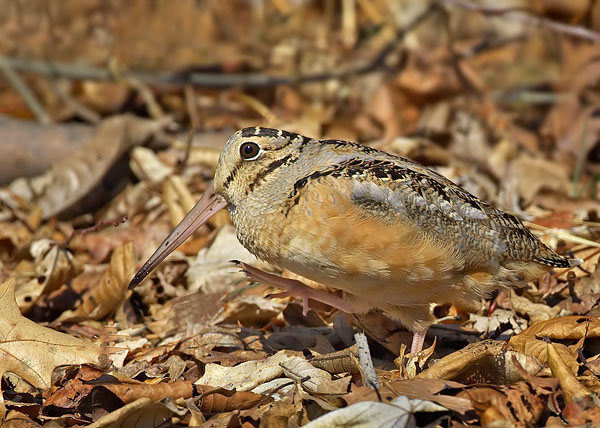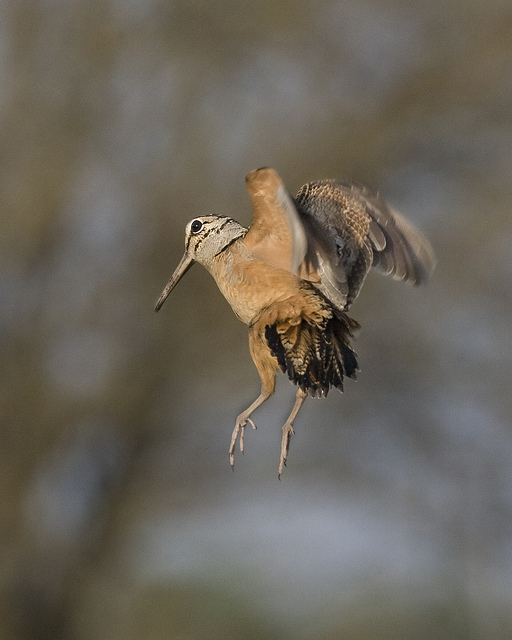
Not two weeks ago I came across a dead woodcock in a downtown flower planter. The victim of a collision with a skyscraper. The dead bird, for me, was a double sadness because I had never seen a live one.
Today, hiking into South Patrol Road Prairie, I expect to see lots of ducks. I am not disappointed. Countless mallards accented by a few northern shovelers and blue-winged teals. I expect to see a few more meadowlarks and harriers, some tree sparrows and killdeers. Check. Less expected are the scores of common snipe and a lesser yellow legs that lands with a piping whistle not ten feet from me.

Totally unexpected is the chunky, long-billed bird I flush from some short grasses. An American woodcock. As with common snipe, woodcocks afford you a few seconds at most to identify them before disappearing back into the grasses or, in this case, a nearby island of woods. But the bird’s plumpness and clearly visible rust colors among the otherwise excellent camouflage strongly indicate woodcock.
To be sure, I return to the site at dusk. Normally, Midewin is closed at dusk. But as this is my first calling frog monitoring night of the season, I am permitted by the Forest Service to be on site in a particular area after dark. The place where I saw the woodcock is near to where I monitor frogs. And so, in the fading light, I stand at the edge of the island woodland, staring out over the adjacent grassland.
And then I hear it. Peent. Peent. At first, it sounds to me like the buzzy flight call of a nighthawk. But scanning the skies, I see nothing. Then I realize that the sound – or the many sounds, now – are actually coming from the ground in both the woodland and the grassland.

And then I see it. The dark silhouette of a chunky bird, fluttering straight up, higher, higher, all the while twittering melodiously away. And when it is nearly out of sight – in spite of the biggest full moon I can remember seeing (tonight, I would learn later, marks a perigee moon; the biggest in almost 20 years) – the bird flutters back to earth. Not like a crippled plane, as Aldo Leopold described. But rather as a large autumn maple leaf.
For a taste of the experience, here’s a video clip, taken from Heller Nature Center: woodcock sky dance. (For those who prefer their woodcocks set to pop music, I’d suggest: you’ve got to move it, move it, mr. woodcock.)